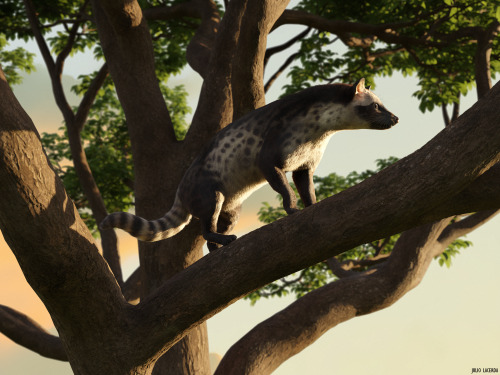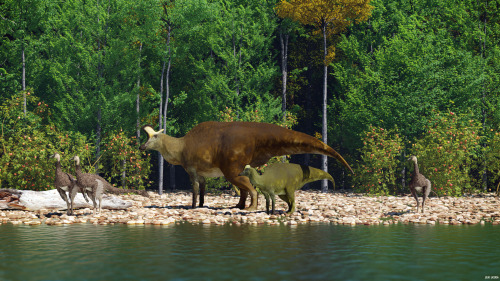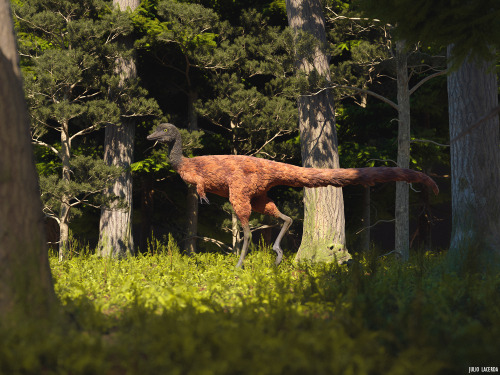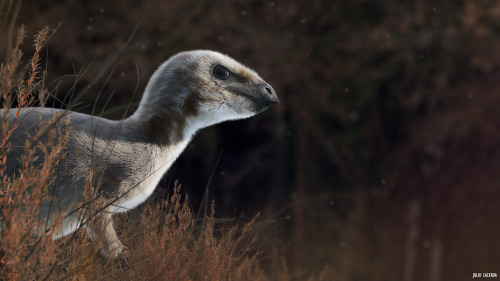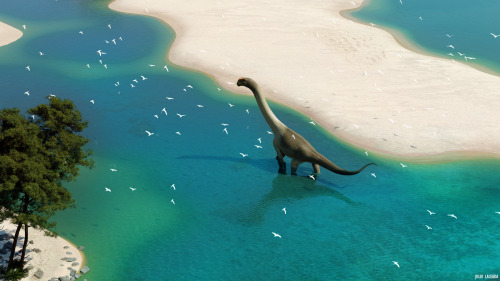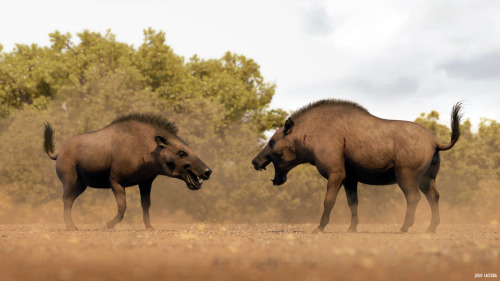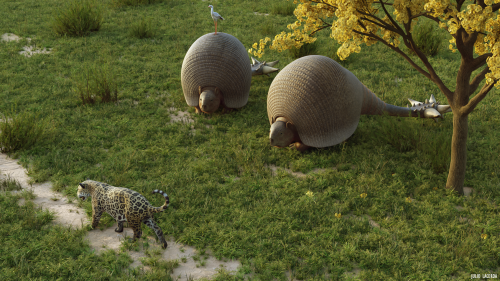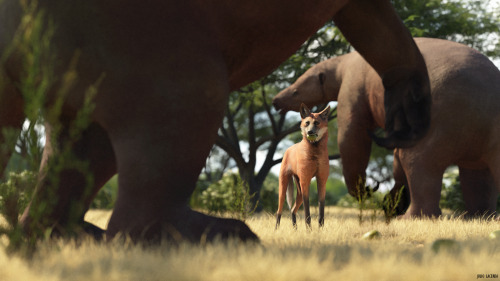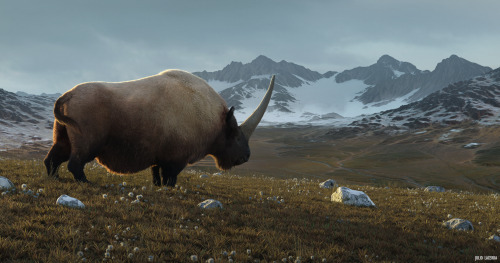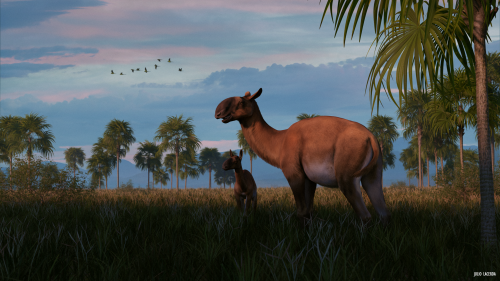#palaeoblr
Had the pleasure of working on these absolute weirdos for PBS Eons’s latest episode, the alvarezsaurids BannykusandAlbertonykus. Check out this week’s video on the evolution of these dinosaurian anteaters!
Patreon•Ko-fi•Facebook •Twitter•Prints & Merch
Post link
Just passing by.
Doedicurus clavicaudatus was a giant armadillo from central South America, with fossils being found in Brazil, Argentina and Uruguay. They reached an average weight of 1,400 kg, had spiked tail clubs and may have remained around until as recently as 7,000 years ago, meaning it certainly coexisted with both humans and other South American animals like the Jaguar and seriema.
Patreon•Ko-fi•Facebook •Twitter•Prints & Merch
Post link
“MOVE!”
Many people don’t know that, but there were once “elephants” in South America. Notiomastodon platensis was a gomphothere (elephant cousins) that lived throughout most of the continent except for higher altitudes. They disappeared after humans arrived in South America, around 10,000 years ago.
With many other large and impressive species, South America was a lot like Africa until very recently.
Patreon•Ko-fi•Facebook •Twitter•Prints & Merch
Post link
Toxodon was a strange, large mammal endemic to South America that went extinct only about 11,000 years ago. It superficially resembled hippos and (hornless) rhinos, and was in fact very distantly related to horses. Alongside this mamma and her calf are rheas and a termite mound, common features of central South America that remain to this day.
Patreon•Ko-fi•Facebook •Twitter•Prints & Merch
Post link
ASpectrovenator watches as two sauropods march in the direction of the forest, during the Early Cretaceous of what is now Brazil.
The only remains of Spectrovenator found so far were recovered from underneath the skeleton of a sauropod, possibly having being crushed to death.
Patreon•Ko-fi•Facebook •Twitter•Prints & Merch
Post link
Blesmols, or African mole-rats, are a group of rodents adapted for mole-like burrowing. Closely related to the more famous naked mole-rat, these little mammals have reduced eyes and ears along with incisors that protrude out even when their mouths are closed, allowing them to excavate tunnels primarily using their teeth.
One of the earliest known fossil blesmols is Bathyergoides neotertiarius here, from the early MioceneofNamibia about 20 million years ago. For almost a century this species was known only from teeth and partial skull remains, but recently a partial skeleton was described giving us a better idea of its overall appearance and lifestyle.
Bathyergoides was a fairly large blesmol, around 25cm long (~10"), and was already specialized for tooth-digging with a skull very similar to modern forms. It had powerful muscular forelimbs that would have been used to push back loose soil while burrowing, but unlike its living relatives it also had a long tail and relatively slender hindlimb bones – with anatomy suggesting its legs were used more for stabilizing its posture than for actively digging.
It may have had a less subterranean lifestyle than modern blesmols, digging out extensive burrows but still foraging for food above ground in a similar manner to modern semi-fossorial rodents like giant pouched rats.
———
Nix Illustration|Tumblr|Twitter|Patreon
Post link


